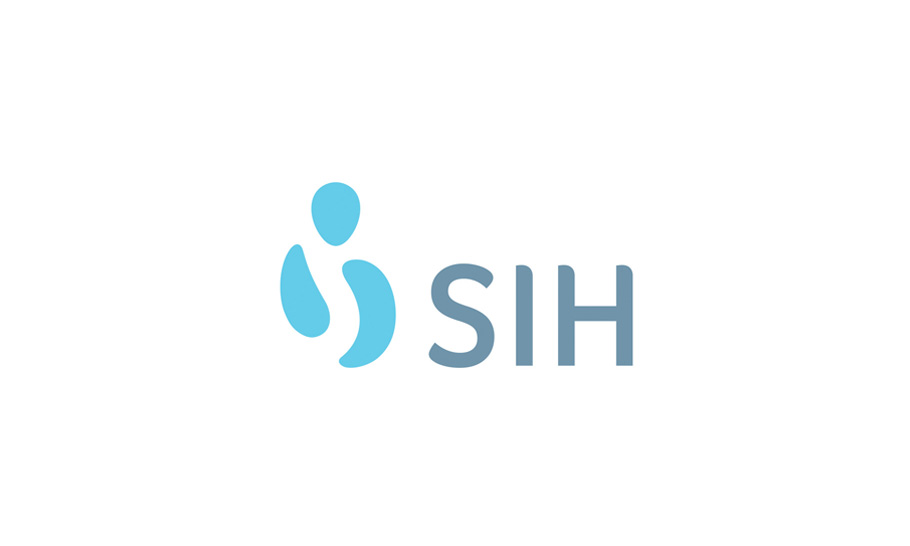Radiation Breathing Techniques Protecting the Heart

There are three different ways to treat cancer: surgery, chemotherapy and radiation therapy. Radiation uses high-energy beams to destroy cancerous cells. In some cases, especially cases of left breast cancer, the heart is inside the target area for treatment. Even low doses of radiation can increase the patient’s chance of developing heart disease later in life. Most external beam radiation treatments see the patient breathing normally throughout the dose. But when cancerous cells are in areas closer to the heart, it poses a challenge to shield that vital organ from unwanted radiation. Enter the Deep Inspiration Breath Hold (DIBH) technique, which protects the heart during targeted radiation treatment.
“The patient takes a breath in, filling the lungs with air, which moves the heart away from the chest wall and closer to the center of the body,” says SIH Radiation Oncology Manager Lori Cohen.
The heart is on the left side of the patient's chest, making patients with left breast cancer perfect candidates for DIBH. When patients breathe in, this moves the heart away from the radiation beam targeting cancerous cells in the breast. The breath hold keeps the patient still, allowing for a more precise target.
DIBH is so precise that different planning scans are needed. Radiation therapists give the cancerous cells coordinates within the patient’s body, and those coordinates are tracked by multiple cameras during the free breathing and breath holds. Radiation therapists at the SIH Cancer Institute work side-by-side with the patient demonstrating proper techniques and duration.
“The patient is coached to take in a breath, blow the breath out, then take in a breath and hold it,” Lori says. “The DIBH treatment may take more than two breath hold series, but there is no way for the patient to get it wrong.”
Staff are always watching the cameras and monitors with additional safeguards built into place. If the patient moves out of the tolerance range for treatment, the beam automatically shuts off to protect the surrounding organs.
When utilizing the DIBH technique, the heart receives a 15 - 20% decrease in mean dose of radiation. It helps prevent the development of heart disease and allows the patient to continue to lead a normal life during treatment and remission. This Heart Month, we are thankful for our oncology staff at SIH Cancer Institute for taking care of the whole patient during their treatment.
Questions:
- What exactly is DIBH?
- Deep Inspiration Breath Hold technique. This is a process whereby the patient will take a breath in, filling the lungs with air, which in turn moves the heart away from the chest wall and closer the mediastinum.
- When/how is DIBH used? What type of patients/cancers are treated with DIBH?
- Patients with left breast cancer are typically candidates for DIBH. The location of the heart is most typically found on the left side of the patient’s chest. If the patient has a condition known as dextrocardia, in which the heart is positioned on the right side of the chest, then those patient’s having that condition with right breast cancer would also be a candidate for DIBH.
- How does DIBH protect the heart?
- When a patient takes a deep breath, the lungs fill with air and the heart is moved away from the chest wall and in turn away from the tangent beam of the external beam radiation.
- How is it different from other radiation treatments?
- During most external beam radiation treatments, the patient will breathe normally throughout the treatment. The only exception to this is when the patient is being treated with Stereotactic treatment to the chest or abdomen when there is a compression band placed on the patient to encourage a shallower breath.
- How does radiation negatively affect organs that aren’t being targeted? (this is kind of like the prior question)
- Another benefit to the breath hold technique is that the target volume and whole breast are relatively still, due to the lack of motion during the breath hold. The target volume is smaller because the physician does not need to take into account the motion of breathing. This technique allows for a very reproducible set up as well.
- What happens if I can’t hold my breath well, or for very long?
- The DIBH technique is based off the initial planning scan. There are a set of coordinates based off free breathing and breath hold. The patient is coached to take in a breath, blow the breath out, then take in a breath and hold it. There are a series of cameras monitoring the skin surface and corresponding to the initial plan. If the patient is perfectly aligned, the treatment can commence. If a patient moves out of the tolerance of the monitor, the beam is automatically held, and the patient is coached to the correct position again. The DIBH treatment may take more than two breath hold series, but there is no way for the patient to get it wrong. The patient is constantly monitored.
- What’s the difference in the impact on the heart if DIBH wasn’t used?
- The heart receives a 15-20% decrease in mean dose of radiation.
- Does it hurt?
- Radiation is completely painless. The side effects from the treatment may be uncomfortable, but they do not begin until a few days to weeks into the treatment and they subside within a few weeks to months once the patient completes treatment. Side effects common with breast radiation are fatigue, breast soreness, and dry, itchy, tender or redness of the skin in the treatment area.